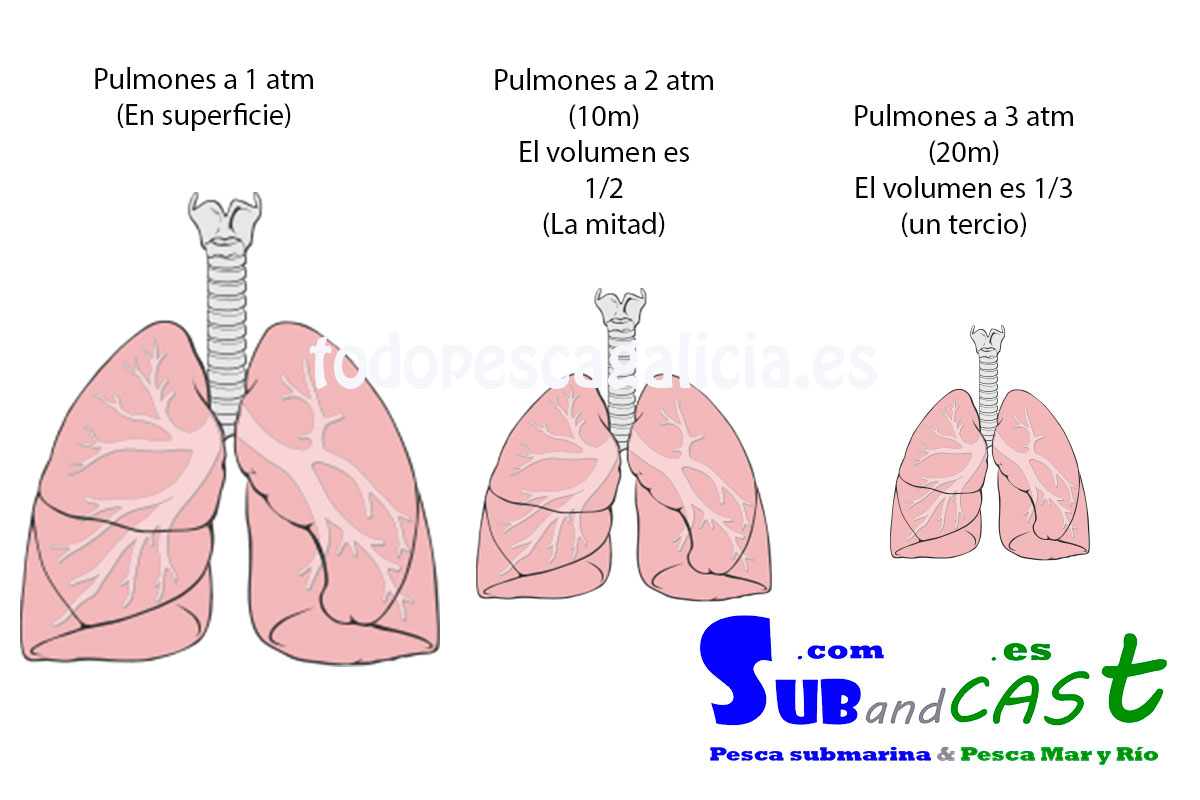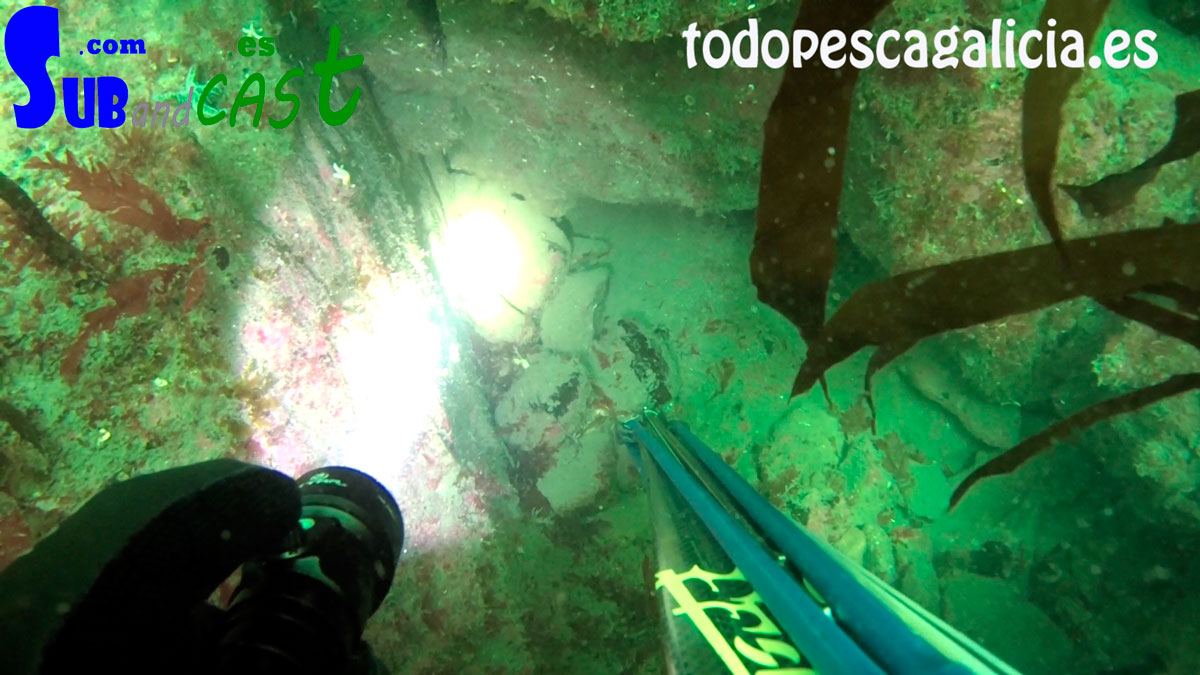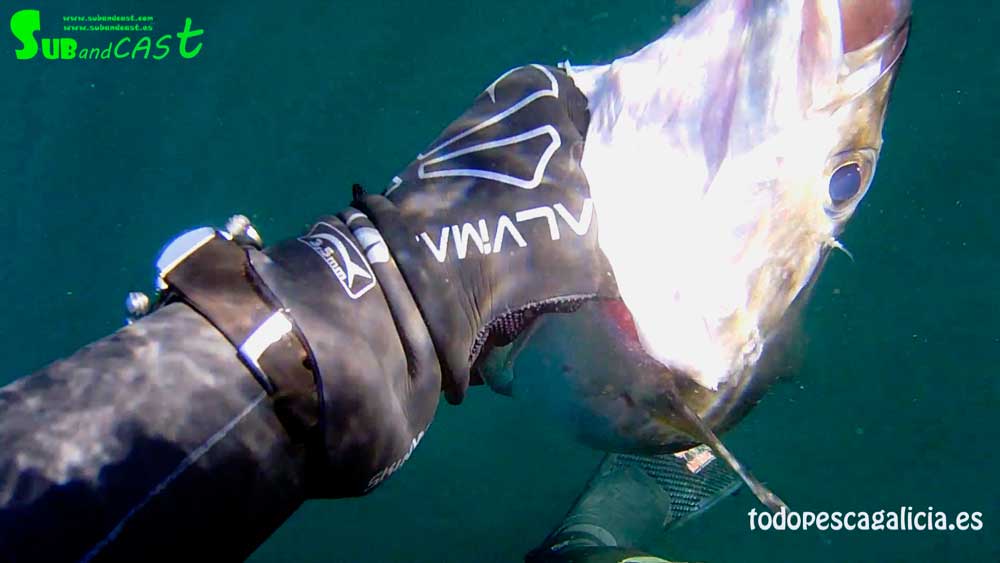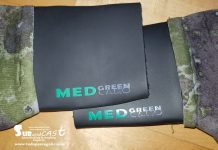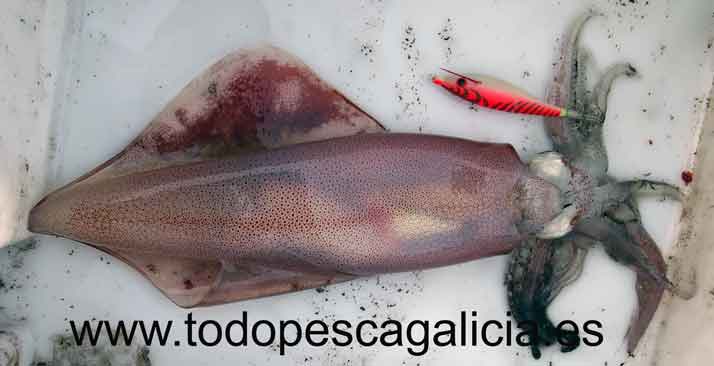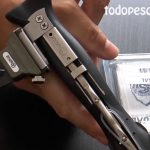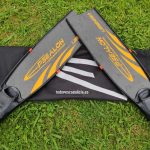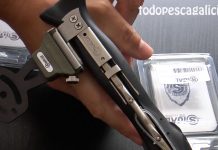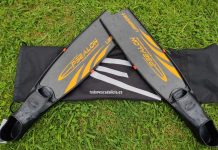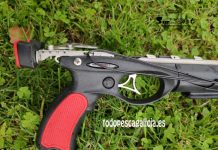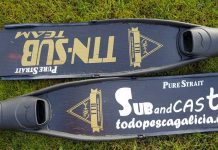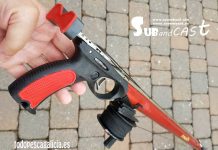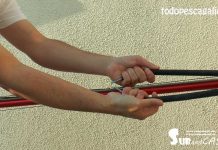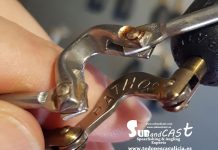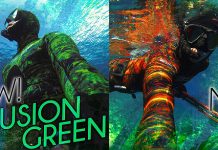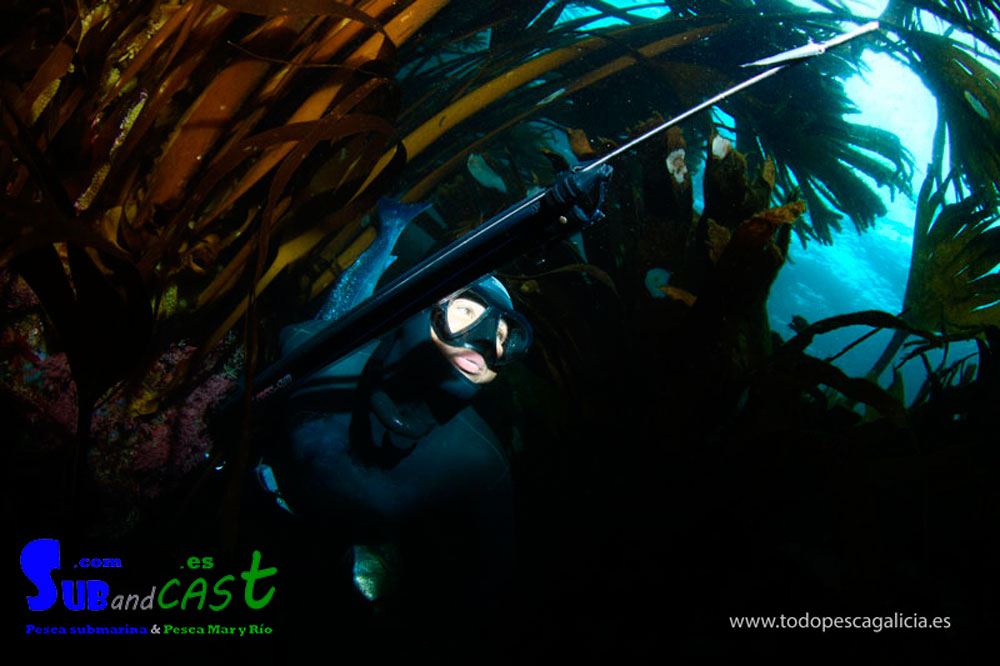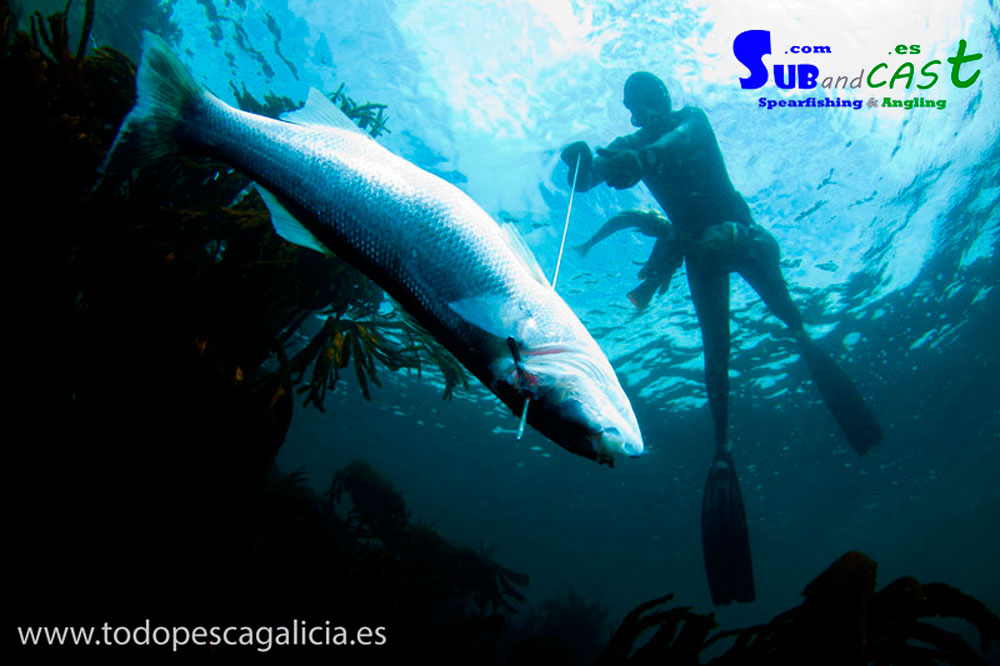Spearfishing course Chapter 2 – Understanding what happens underwater
After having seen the importance of having a good fitness level in the previous chapter, and also understanding that a minimum level is needed to train for spearfishing, today we are going to learn what happens underwater.
Because it’s very important to understand what happens when we go underwater. The underwater physics. And also what happens inside of our body. This is the only way to improve and increase the safety.
We have seen many times misunderstandings that can increase the risk of having a blackout and we need accurate information.
So then, without waiting anymore, let’s get started. We will do it talking about diving physics. We have to note that the explanations given here are only to give a simple, schematic and easy to understand explanation of what happens.
When we go underwater
Since the moment in which we enter the water, we have to understand that we are in an environment for which we are not specifically adapted. It’s different.
The first difference is the loss of heat. When we are in the water we lose 25 times more than when we are on dry land. This means that, at the same temperature, the body has to work way harder to keep the same temperature. This explains why we need a suit. And, the colder the water is, the more important the suits becomes. Then, when we are fishing we will not only burn calories due to the exercise, but also just for the fact of keeping ourselves warm. And this goes beyond of comfort or thermic sensation.

A bad termic protection will reduce our breath hold time and will also increase the chance of suffering a black out. So then, when we start to feel cold, we should go out of the water and don’t try to push. Or change the fishing technique and try to stay on shallower depths and do more dives to get warm.
Another difference is the loss of colors. When we start diving, the colors disappear with the depth, getting absorbed by the water column. The first one is the red at 3 meters, then the orange, the yellow… Due to this, we can not rely on how a suit or a fish look out of the water, because everything will change. And also, the amount of light will be less and less.
Another difference is the vision variation. Underwater, and due to the mask, we will see the objects bigger and closer than they really are. Actually this doesn’t give us a lot of problems more than getting mistaken with fish sizes or missing some shots for thinking the fish was closer than it really was. But we will get used to this with time.
THE PRESSURE
Since the moment in which we go into the water everything changes completely. Another of the factor to keep in mind is the pressure.
As we already know, the pressure is the force that the water makes on us. It’s measured in ATM, which is equivalent to 1kg per cm2. When we are in the surface, we are holding the pressure exerted by the air column we have on top of us. This means that in our everyday life we are holding 1 kg per cm2 (under standard conditions) which is equivalent to the weight of the column of air above us (in the atmosphere).
 But underwater, it increases way faster. To get an idea, we can make an approximation and say that it increases in 1 atm every 10 meters. So, at 10m the pressure will be doubled. At 20m, we will have 3atm, 3 times more than in the surface, at 30m 4atm and so on.
But underwater, it increases way faster. To get an idea, we can make an approximation and say that it increases in 1 atm every 10 meters. So, at 10m the pressure will be doubled. At 20m, we will have 3atm, 3 times more than in the surface, at 30m 4atm and so on.
| surface | 1atm |
| 10m | 2atm |
| 20m | 3atm |
| 30m | 4atm |
And, why is this important? For several reasons:
Buoyancy: when the pressure increases, the wetsuits gets compressed. And it loses thickness and buoyancy. The result is that if we are neutral in the surface, at 10m our buoyancy will be negative and we will sink. And the more we descent, the more important this variation will be. So, it affects our safety and our comfort. We shouldn’t forget that we want to have neutral buoyancy in the depth we are fishing.

The air gets compressed: the gases get compressed, and the one we have in the mask will shrink (we will cover it more in depth later) and our mask will make a vacuum effect against our face. It’s an uncomfortable sensation that could affect our eyes (ass pulling them to the outside). To equalize this, we have to blow air into the mask through the nose. This is why the masks have the nose inside and it’s not possible to use swimming goggles. Due to this the volume of the mask affects our performance, specially the deeper we go, because we will need to blow more air to equalize it.
And the same way it happens in the mask, the increase of pressure will affect the amount of air inside our body. The most obvious space is the lungs. But we also have air inside the sinuses, ears… And this is why we have problems to dive if we re congested and we can not equalize properly. But we have already talked about this in How to Equalize.

Now we are going to focus on something very important: understand what is the air, what is made from and how it gets affected during a dive.
The air we breathe is a mixture of gases, being the most important the Oxygen (O2), which is a 21% of the total. The Nitrogen (N2) is 78% and the Carbon Dioxide (CO2), that would be around 0,04%. To see it clearer: in 1litre of air we have 0,21l of Oxygen, 0,78l of Nitrogen and 0,004l of Carbon Dioxide. These amounts are also their partial pressures. But watch out, the partial pressures in the surface, at 1atm pressure. When we dive and we get affected by the pressure it will be different. For now, let’s just remember this information.
We already know what is the air. Now, let’s talk about our lungs, which is the place that holds the air we breath.
For this, we need to know that the lungs are never used at their 100%. So we have to see which percentages are used in order to understand how to breath.
We have:
The tidal volume: Normal breathing we do in our daily life. We move around half a liter of air. Under normal conditions, it’s all we need.
The inspiratory reserve volume: this is the amount of air we can inhale after a tidal inhale and until we fill our lungs. So, after a tidal breath we can still make some effort to bring more air inside our lungs. It will be about 2 to 3 liters. As we can see, it’s a very noticeable amount.
The expiratory reserve volume. It’s the amount of air that can be exhaled after a normal exhalation. So, after making a tidal exhalation, we can still keep blowing air out of our lungs. It’s around 1 to 1,5 liters.
The vital capacity: It’s the sum of the previous 3. Around 3,5 to 5 liters of air are moved. Of course, this amounts are just an approximation and some people exceed them.
The residual volume: It’s the air that remains in the lungs after a forceful exhalation. This means that we can never exhale all the air out of the lungs, there is always some.
The total lung capacity: This is the sum of the vital capacity plus the residual volume.
 Looking at this we can understand the importance of knowing how to breathe. But be careful, one thing is to know how to breathe and another is to over-breathe, as we will see later.
Looking at this we can understand the importance of knowing how to breathe. But be careful, one thing is to know how to breathe and another is to over-breathe, as we will see later.
The breathing is about inhaling thinking about the previous percentages. That air, once in the lungs suffers a process and the oxygen is sent to the bloodstream. And from the blood, the CO2 is sent back to the lungs. This happens because our cells use oxygen for their functions. We supply them with it when we breathe and they burn the oxygen producing CO2.
So then, while we hold our breath, the CO2 level in our blood increases at the same time the Oxygen decreases. We have to understand this, because it’s basic to understand why we can suffer a blackout and why we feel desire to breath.
We saw that in the inhaled air the oxygen level is 21%, and in the exhaled is around 16%. And the CO2 is 0,04% in the inhaled air and around 4,5% in the exhaled. The nitrogen remains almost the same, it can only get accumulated in some tissues, as we will see later when we talk about DS (decompresion sickness).
 Why do we focus so much on this? To understand what makes us want to breath and when we can suffer a blackout.
Why do we focus so much on this? To understand what makes us want to breath and when we can suffer a blackout.
The urge to breathe: All of us know that feeling after being holding our breath for a while. First is a sensation and it increases until we feel diaphragmatic contractions if we keep holding. The important thing to keep in mind is that the urge to breathe is triggered by the build up of CO2 and not by the lack of Oxygen.
The urge to breathe – Rise of CO2 in blood – NOT for lack of O2
And here is where the risk of hyperventilation comes. The fact of doing hyperventilation (or over-breathing) doesn’t put more oxygen in our blood, as some people think. What it actually happens is that we wash the CO2 out of our blood. The only thing we get by doing this is delay the urge to breathe. We don’t get more time, but we go closer to the blackout threshold without feeling the urge to breathe. Now, we are going to see why.
THE BLACKOUT
It’s without any question the biggest risk in spearfishing. And the one that caused more deaths. In order to prevent it, we are going to understand it first.
When we are practicing spearfishing, the mammalian dive reflex happens. This is a process that reduces the heart rate. It causes peripheral vaso-constriction that reduces the amount of blood in the extremities and it’s sent to the core and brain. And also a better and more efficient use of the oxygen available. This is why holding our breath in dry land is harder and the performance is worse.
So, when we practice spearfishing or freediving, our heart beat gets lowered, we spend less oxygen and our blood circulation in the extremities gets reduced.
This vaso-constriction is another evidence that we have to be well protected against the cold. When the circulation is less, they get cold easier. For this reason we advise you to keep always your gloves and socks in good shape if you dive in cold water.
Let’s go back to the blackout. As we have seen, when we hold our breath, the O2 is used and the CO2 level increases.
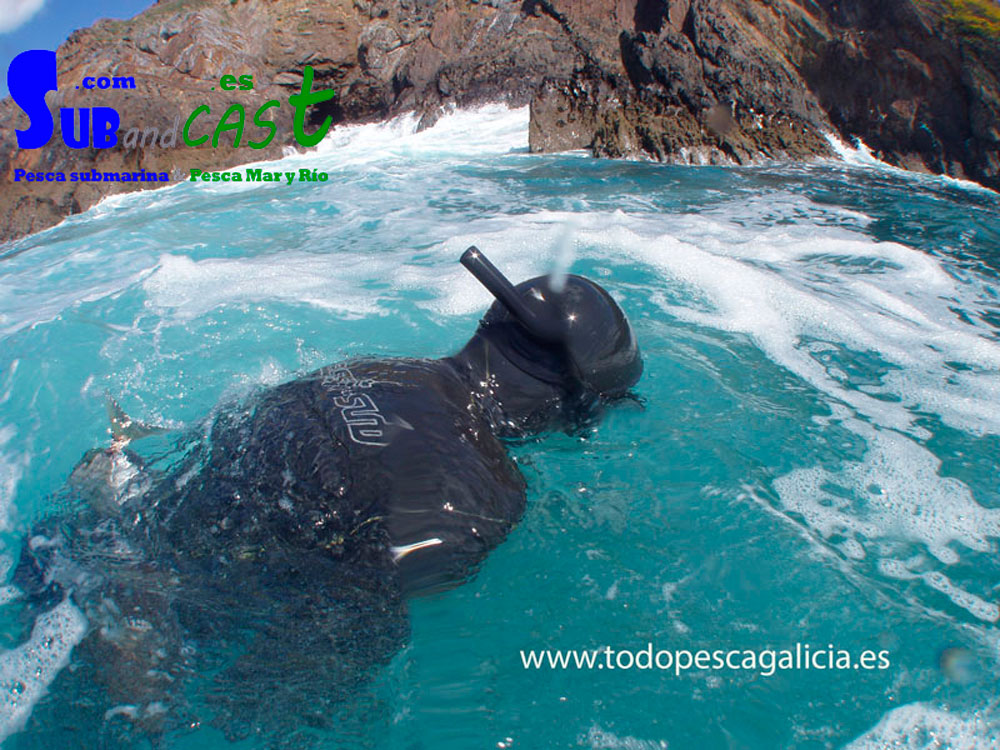
This CO2 is the alarm that tells us that we have to breath at a certain point. But if we push and we keep holding our breath, we will reach a point in which de O2 level in our blood is too low and we suffer a blackout.
The steps of the black out are:
1- First symptoms that we need to breath, due to the CO2. If we keep holding, we go to the next stage.
2- Diaphragmatic contractions (involuntary movements of the diaphragm, like our belly trying to get sucked to inside) produced by the CO2. They are the sign that we have to breathe. The risk is getting higher and higher. The next stage is:
3- Loss of motor control (samba). We have involuntary contractions of arms, legs… We loss mobility and response capacity. Then, we lose the vision. And after this, we get:
4- Blackout. A blackout is a faint. The body reacts like this when there is a big lack of oxygen that could damage the brain. Its used in the vital organs and the brain, preserving the oxygen available for them. If we get rescued, there are no problems. But if we don’t have somebody by our side who knows how to react, we will die.
After having seen this, we also have to understand the risk of blackout during the ascent. When we are at depth, the water pressure also takes part. So, being at 20m (3atm) the partial pressure of oxygen is higher. When we start ascending, the external pressure gets reduced, and also the partial pressure. And the moment in which this reduction is more sudden is right in the change from10m to the surface (it goes to half). This is why it’s the most dangerous part of the ascent if we have been doing deep spearfishing and long breath holds. So remember that around 7 to 5m the blackout can happen and it will have a bad ending if we don’t have a buddy close to us.
What to do to minimize the risk of a blackout
The first rule is to never push. In spearfishing we are not in a controlled environment, a lot of times we don’t have a buddy close to us or the weather conditions can make difficult to stay close to him. For this, don’t push. Never. Don’t reach the point in which you have contractions. With training, it’s possible to control the diaphragmatic contractions and increase our breath hold times. But in our opinion, this is not recommendable in spearfishing for safety reasons.
During the ascent we shouldn’t release air. If we do that, we can suffer a sudden descend in our partial pressure of oxygen and we can have a blackout.
After reaching the surface after a long dive, don’t exhale roughly. Exhale slowly a bit and then inhale with energy. Doing this, we charge ourselves with oxygen and after that we can go back to a normal way of breathing. Avoid releasing all the air and empty your lungs totally to be able to get more air, because you will lower your blood pressure and you can be in danger of a blackout.
NUTRITION AND HYDRATION
This is a topic often overlooked by a lot of spearfishers, but it’s very important. As we saw, we are in a hostile environment for us and the physical activity we are going to perform will not have the same behavior as it would have in dry land.

While doing spearfishing, we will spend hours doing exercise. And our body will need to burn calories not only to move, but also to keep the temperature, specially in cold water. For this, it needs savings.
It will be important to take care of the food we eat the night before spearfishing, not only the breakfast. The night before will be recommendable to get protein.
The breakfast should be with enough time before going into the water. Long chain carbohydrates like cereals, bread or cookies are recommendable. Also jam or honey (not sugar). We should avoid coffee and tea for being irritant. And also avoid the intake of citrus fruits and citrus juices that can produce reflux.
But there is anybody better than ourselves to know what is good or bad for us.
It’s not advisable to eat right before getting in the water due to the digestion.
And now we get into a key-point: the hydration. For sure some of you have felt that sensation that once you reach some point during the session the breath-hold times go downhill and we start to feel slow… This is mainly due to dehydration. The same thing when we end the day and we go back home driving and we feel we are slow with our reactions and our thoughs.
Dehydration causes these effects. Due to this is very important to drink often. My personal advice is to get sport drinks with some glucose input. We should avoid those ones with high sugar content, because they would give us a peak and then a sudden descent. Keep well hydrated during all the session.
For sure that a lot of you feel that you pee a lot during the day (specially in cold water). And this is besides the liquid we lose in other ways. So you can have an idea of how much we need them.
So then, ALWAYS keep hydrated getting some drink in the buoy or the boat. And drink small sips often, even if we don’t feel like. But don’t drink a lot and get full.
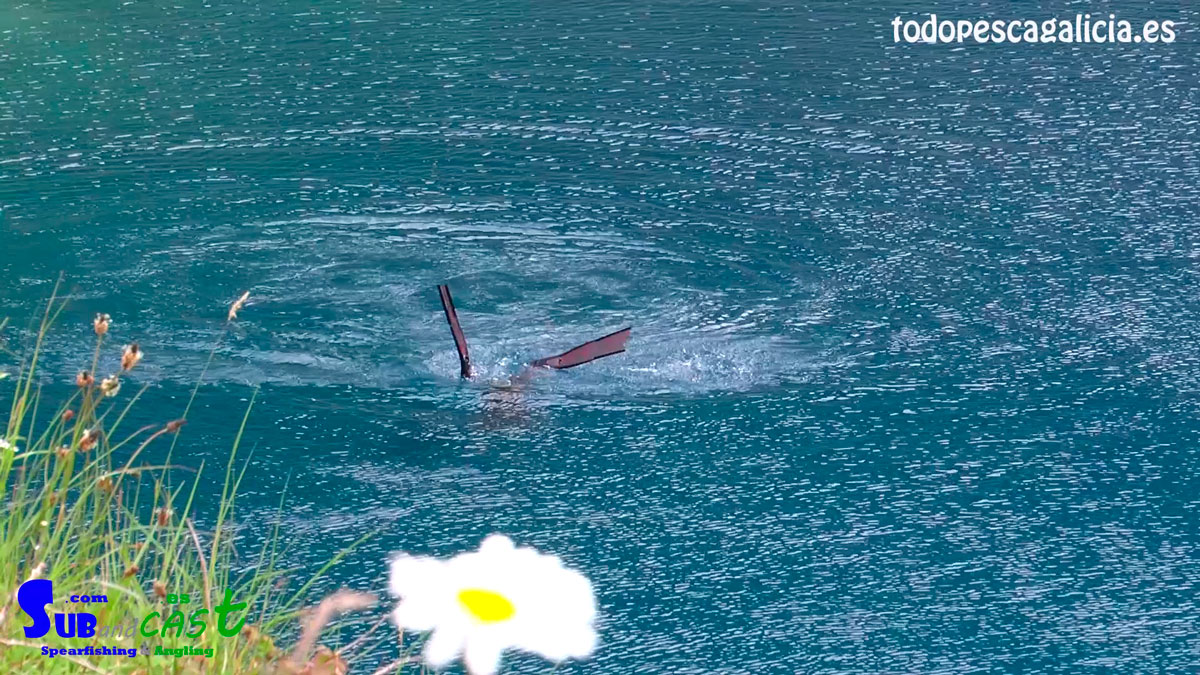 And for when we finish the session, keep in the car more drink and something to eat. My recommendation is some sport drink, some fruit and some shake with protein and L Glutamine (we covered it in a previous article) that will help us in our muscle recovery.
And for when we finish the session, keep in the car more drink and something to eat. My recommendation is some sport drink, some fruit and some shake with protein and L Glutamine (we covered it in a previous article) that will help us in our muscle recovery.
If we do it, we will feel the difference the day after. For sure that a lot of you felt that sensation like if you were knocked down by a trailer. This is mainly produced by the dehydration during the previous day (even more than the physical fatigue).
In the next chapter we will see the differences of each fishing technique, which will be very important for the type of training we want to do. Because spearfishing is not always the same, and depending on the spot and the personal preferences it will demand different skills. To put an easy to understand example, in running is not the same to train for speed or for endurance.
If you have any question you can use the FORUM or leave it here in the comments. We will be glad to answer.

